Howdy folks! It’s been a while since my last post but I’m still here and hope you’re all doing well.
Today I’d like to pass on some knowledge to you and hopefully inspire some would-be Macro mechanics out there. A while ago I got talking to a guy who had a bunch of old SLR cameras and he said to me that if I could fix them then he would pay me or give me something in kind. The cameras he gave me were both the same, Pentax ME Super, and both had the same issue.
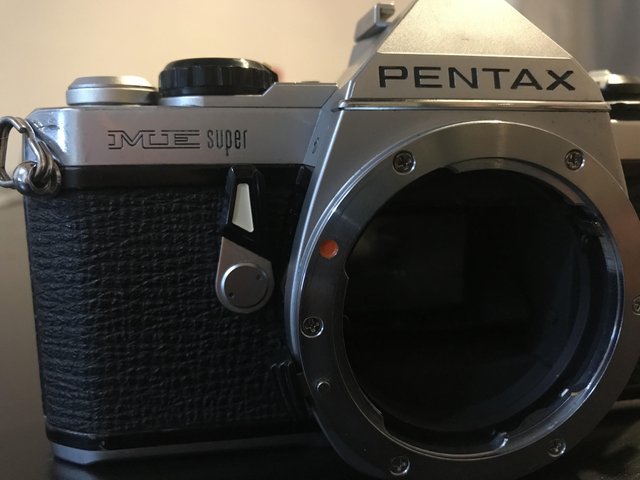
The problem they had was that they wouldn’t wind-on or fire the shutter and to begin with I had no idea what was causing this, nor did I have any experience fixing cameras. I am, however, a mechanically minded person and although I usually fix trucks and cars I assumed that the other end of the size spectrum wouldn’t be much different to repair...it’s just nuts and bolts at the end of the day...and maybe a few teeny tiny little springs too.
Fortunately, the owner of the cameras said he wasn’t worried if I couldn’t fix them so there was no real pressure. More importantly though, this meant that I could use the first camera as a practice model and learn from any mistakes I made. So, after much cursing, head-scratching and squinting, I had the first camera in pieces and had worked out exactly what the problem was...In fact, one of the pictures below shows the carcass of that sacrificial snapper.
As well as learning how to fix this common problem, I also learned some shortcuts and a few handy little trick to enable me in becoming the camera ninja I am today! So gather round, my young apprentice, and let me guide you through this tricky process.
Tools you’ll be needing...
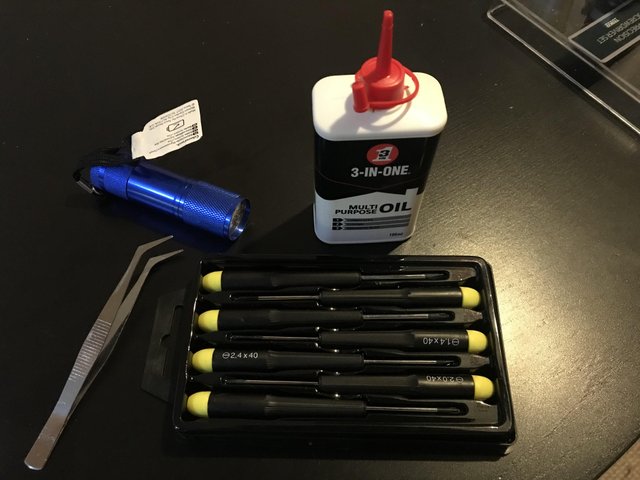
STEP 1 - The base plate
Now this part looks simple but there are a few things to be aware of when removing the base plate...
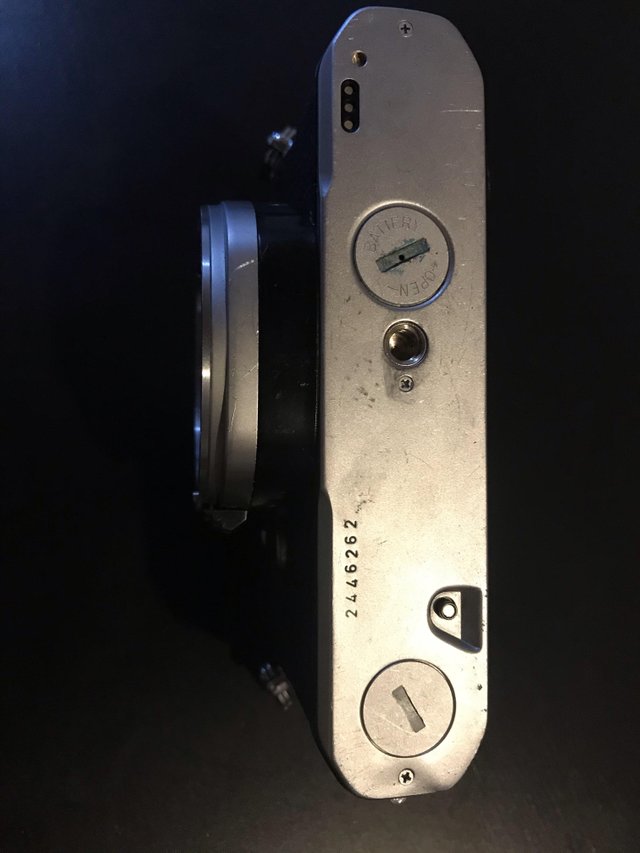
This plate is held in place by three screws. The outer two are the same size but the middle one is slightly shorter in length and you don’t want to get them mixed up. If you read on I’ll show you a great trick that will save you a lot of hassle when it comes to remembering which screw goes where.
Now, you’ve removed your baseplate screws and you’re ready to lift off the plate and expose what lies beneath...go on then, lift it off and take a look.
STEP 2 - The Pincer thingy-ma-jig
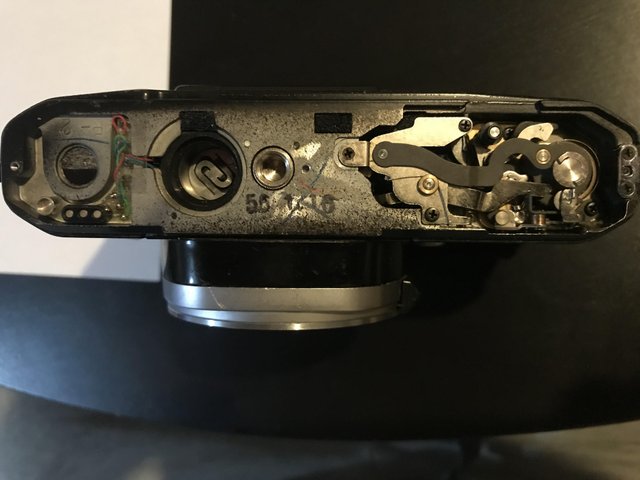
As you can see, there isn’t too much to look at here, just some weird pincer-like thingy and a few springs. That pincer thingy-ma-jig is what needs to be removed first and if you look closely you’ll see that there are three screws holding it in place...or so you think...
In actual fact, the arm that extends the furthest fits on top of a brass bearing which is trapped in place by the silver castellated nut (The one with the yellow arrow pointing to it in the picture below). Once you’ve removed the three screws and loosened the castellated nut(AND I MEAN LOOSEN, DO NOT UNDO THIS NUT ANY MORE THAN YOU NEED TO!!!!), you’ll be able to tease out the pincer-thingy. After you remove this part it is best to tighten down the castellated nut to hold the parts under it in place.
BE WARNED! DO NOT FLIP THE CAMERA OVER UNTIL YOU’VE REMOVED TWO IMPORTANT PARTS!!!(I’ve marked these parts with a red arrow in the picture below)
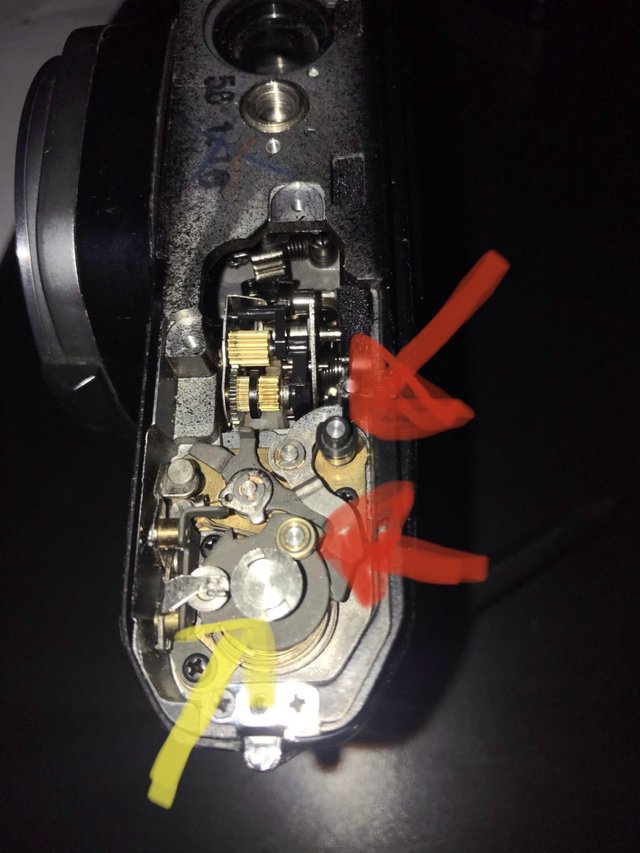
Place these little parts to one side and try to remember which way up they go...you don’t want to do the job twice now, do you?
Now it’s time to show you that handy little trick that stops you muddling all your screws up. For this part you’ll need a pen and paper and you can thank me for this simple but ingenious tip later on...
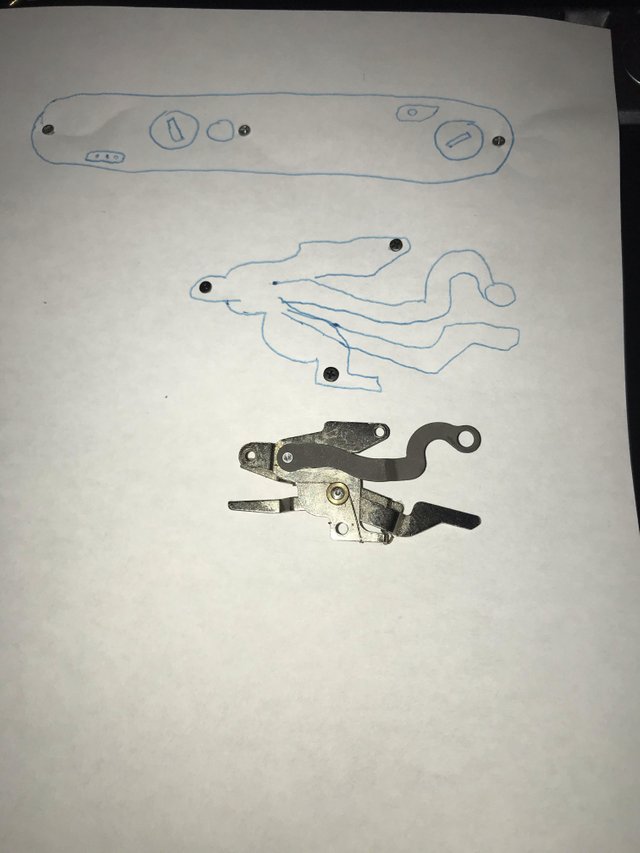
TA-DAR!! Simple as that! Just make yourself a crappy drawing, something like what you have in front of you and then poke a tiny hole where your screws go. Then, you just have to place the screws you take out your camera into the corresponding holes on your drawing.
STEP 3 - The sticky trigger
In the picture above you can’t really see all the important moving parts. Most of them are covered by the casing of the camera, but that isn’t a concern as I’ve found a cheeky little shortcut that enables you to fix the problem without having to dismantle the whole camera in order to expose these parts(which is exactly what I had to do the first time around).
It is important to that you know what you’re going to be poking around at blindly and this is where my next picture comes in super-handy.
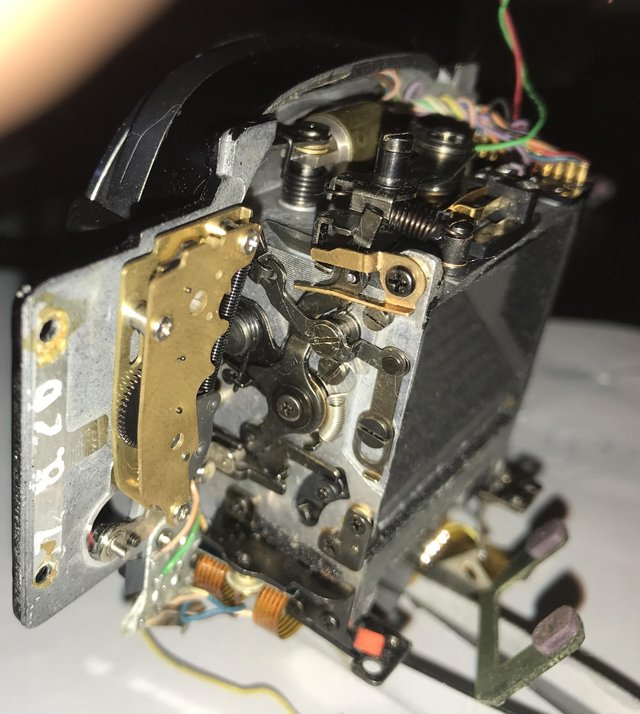
What you’re looking at in the pic above is the shutter unit and all the fiddly parts that make it work. Just this picture alone doesn’t really shed much light on the parts not working correctly, but my next picture does...
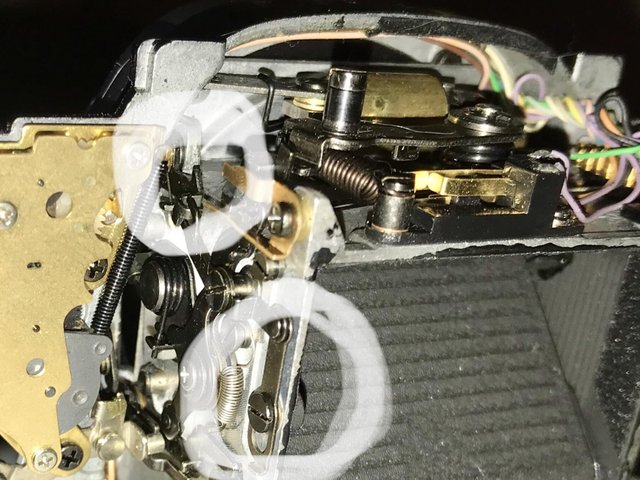
The parts I’ve circled in white are what need your attention. Both of these moving parts are prone to sticking and all they need is a little oil and they will soon be back in action. The part circled at the top of the picture is supposed to rise up and catch the spring loaded arm and hold it there until you press the camera button and trigger its release.
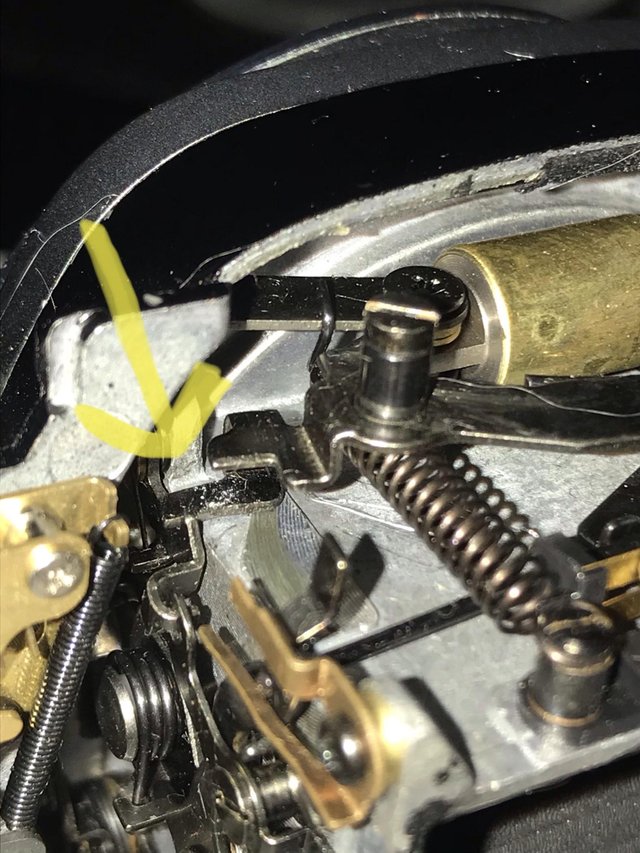
The other part I circled in white is a little tricky to get to, but if you lubricate the part above then some of the oil will drop down onto this troublesome joint. Now don’t go crazy with the oil as you don’t want it spreading to the shutter glass or curtain.
One way I’ve found to control the amount of oil you administer is to place a drop of oil onto one of your precision screwdrivers and then place the end of the screwdriver onto the part you need to lubricate and allow the oil to trickle down the shaft and directly onto where you need it. After this you can use your screwdriver to push down on the catch that holds the spring loaded arm and work in the oil. Do this until the catch springs to its upward position with no resistance.
STEP 4 - The rebuild
Now this part is relatively simple, just reverse the process used to break open the camera. One thing to make sure of is that you locate the Pincer thingy correctly. You’ll know when it’s in the right place as it will lie flat on all three of its screw points. These screw points won’t automatically be in line as the pincer is spring loaded, so just use you fingers to gently line up the holes and put all the screws in loosely before tightening them down. All you need to do now is tighten up your castellated nut and refit the base plate.
You are now an official Pentax ninja!! Now go check out all those faulty cameras on eBay and snatch yourself a bargain!
Hope you all enjoyed this post and I’ll catch you on the next one! Peace ✌️